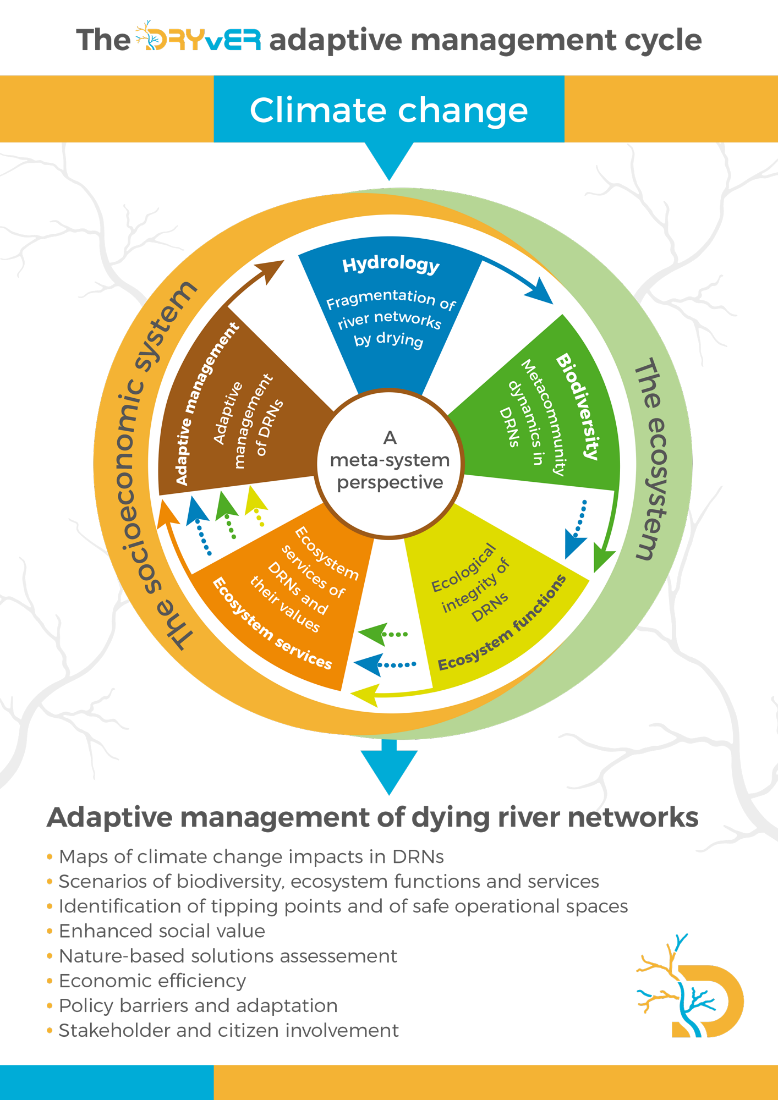| |
It shows how DRYvER will use this cyclic model as a structured loop embedded in a meta-system perspective to guide adaptive management of DRNs. DRYvER will translate climate projections into changes in flow intermittence patterns at multiple scales, including that of the strategically-selected focal DRNs. This physical setting will then be used to implement a dynamic meta-system perspective to understand the cascading changes in biodiversity, ecosystem functions and ecosystem services. This knowledge will be integrated to develop a multi-criteria decision framework combining scientific, management, socio-economic, legislative barriers and leverages to promote an adaptive management of DRNs.
|
|
| |
Part of: Datry T, Allen D, Argelich R, Barquin J, Bonada N, Boulton A, Branger F, Cai Y, Cañedo-Argüelles M, Cid N, Csabai Z, Dallimer M, de Araújo JC, Declerck S, Dekker T, Döll P, Encalada A, Forcellini M, Foulquier A, Heino J, Jabot F, Keszler P, Kopperoinen L, Kralisch S, Künne A, Lamouroux N, Lauvernet C, Lehtoranta V, Loskotová B, Marcé R, Martin Ortega J, Matauschek C, Miliša M, Mogyorósi S, Moya N, Müller Schmied H, Munné A, Munoz F, Mykrä H, Pal I, Paloniemi R, Pařil P, Pengal P, Pernecker B, Polášek M, Rezende C, Sabater S, Sarremejane R, Schmidt G, Senerpont Domis L, Singer G, Suárez E, Talluto M, Teurlincx S, Trautmann T, Truchy A, Tyllianakis E, Väisänen S, Varumo L, Vidal J-P, Vilmi A, Vinyoles D (2021) Securing Biodiversity, Functional Integrity, and Ecosystem Services in Drying River Networks (DRYvER). Research Ideas and Outcomes 7: e77750. https://doi.org/10.3897/rio.7.e77750
|
|
